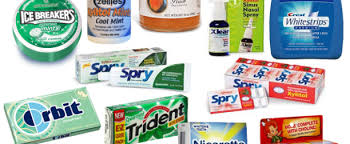Dr. Justine A. Lee, DVM, DACVECC
With America on a weight-loss craze, everything nowadays is sugar-free. While this is likely good for you, it’s potentially very dangerous for your dog.
The
problem is that many sugar-free products contain xylitol. So what
exactly is this scary sounding chemical (pronounced zi-li-tol)?
Xylitol is a sugar-free substance used as a sugar substitute. It’s
commonly called a “sugar alcohol,” and is naturally found in
certain fruit (in small amounts). Xylitol has gained recent
popularity because it is sugar-free, reducing caloric intake for
humans. It also is thought to protect cavities in people.
Xylitol
is commonly found in many household products including the following:
- Diabetic snacks (e.g., gums)
- Diabetic foods
- Baked goods
- Gums
- Mints
- Candies
- Mouthwashes
- Toothpastes (in large amounts!)
- Chewable sugar-free multivitamins
- Chewable sugar-free prenatal medications
- Nasal sprays
- Medications (including oral pills over-the-counter like melatonin or prescription medications like gabapentin)
As
you can see from this list, xylitol is in just about everything
now.
While it’s completely safe for humans, it results
in a severe insulin release when ingested by non-primate species
(e.g., dogs!). Acute poisoning will occur in dogs, resulting in two
main syndromes: hypoglycemia (i.e., a life-threateningly low
blood sugar) and acute hepatic necrosis (i.e., severe liver
failure).
Symptoms of xylitol poisoning in dogs include the following:
- Weakness or lethargy
- Depression
- Walking drunk
- Acute collapse
- Vomiting
- Trembling or tremoring
- Seizures
- A racing heart rate
- Jaundiced gums
- Black-tarry stool
- Diarrhea
- Bruising
- Abnormal mentation
- Clotting problems
- Death
If
you think your dog was accidentally poisoned by a sugar-free product,
first, stay calm! Next, read the ingredients to see if the product
contained xylitol. The general rule is that if xylitol is listed in
the first 3-5 ingredients (typically in order of the amount that they
appear in the food or product), it is going to be poisonous!*
*If
your dog does get into something sugar-free, always check the
ingredient list. Note that other sound-a-likes like sorbitol,
maltitol, and erythritol are not poisonous to dogs. Likewise, other
sugar-free products such as stevia, saccharin, sucralose, aspartame,
etc. are also not poisonous to dogs. If your dog gets into one of
these other sound-a-likes, it’s not poisonous. No need to worry, as
long as you’re positive there’s no xylitol!
With
xylitol poisoning, it is imperative to calculate whether a toxic dose
has been ingested. In dogs, doses > 0.1 g/kg are considered toxic
and result in profound, sudden problems. Higher doses (> 0.5 g/kg)
of xylitol have been associated with acute hepatic necrosis. Many
pieces of candy and gum (e.g., Orbit™, Trident™, Ice Breakers™)
contain various amounts of xylitol ranging, on average, from 2
mg/piece to 1.0 grams/piece. Unfortunately, not all sources are
disclosed by the company (e.g., how many grams of xylitol may be in
each piece of gum) so sometimes it’s hard to calculate a toxic
dose.
If your dog did ingest a poisonous dose of
xylitol, treatment includes the following:
- Checking a stat blood sugar level with your veterinarian. If it’s normal and ingestion was recent (within a few hours), your veterinarian may induce vomiting.
- If your dog is hypoglycemic, a stat bolus of intravenous (IV) dextrose (i.e., sugar) is a must, followed by hospitalization. Treatment will include IV fluids with sugar supplementation (e.g., dextrose) for a minimum of 12-18 hours. If your dog is able to maintain his blood sugar as the dextrose supplementation is weaned down over time, then your dog can go home!
- If your veterinarian induced vomiting in your dog, make sure they skip the charcoal – no need for your veterinarian to give activated charcoal (i.e., a black liquid product that binds up some poisons). Charcoal does not reliably bind to xylitol, so it’s not necessary with xylitol poisoning.
- If a toxic dose was ingested and not vomited back up, your veterinarian will recommend hospitalizing your dog for IV fluids, dextrose supplementation, and symptomatic supportive care.
- Careful monitoring of blood work (including the liver enzymes, electrolytes and blood sugar) is imperative.
- If your dog ingested a dose approaching the liver-toxic amount of xylitol, the use of liver protectants (e.g., SAMe, milk thistle, n-acetylcysteine) is warranted. Most dogs are sent home on liver protectants for several weeks, while rechecking liver enzymes frequently at your veterinarian, to be on the safe side.
When
in doubt, if you think your dog got into xylitol, contact your
veterinarian or an Animal
Poison Control Center right
away for life-saving care. They can help calculate and determine
whether or not the amount of xylitol ingested was poisonous or not.
Always try to keep these products or foods out of reach of your
pets.
Remember, with
any pet poisoning,
the sooner you recognize the problem and seek veterinary attention,
the less expensive and less dangerous it is to your pet!
If you have any questions or concerns, you should always visit or call your veterinarian — they are your best resource to ensure the health and well-being of your pets.
Related symptoms:

